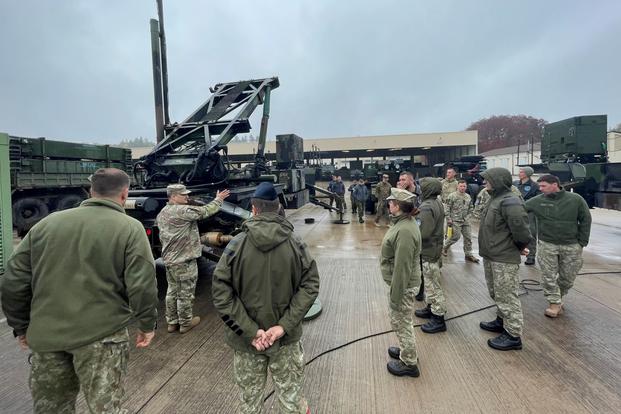Geoff LaMear is a fellow at Defense Priorities. He is also an air defense artillery officer in the U.S. Army. His views are his own and do not reflect the views of the Department of Defense.
The opinions expressed in this op-ed are those of the author and do not necessarily reflect the views of Military.com. If you would like to submit your own commentary, please send your article to opinions@military.com for consideration.
With Ukrainian troops en route to the United States for training on the Patriot missile system, Washington is now sending some of its most sophisticated weapons to bolster Ukraine's already extensive air defense network. Sending Patriot missile systems to Ukraine might seem useful, given repeated Russian drone and missile attacks on civilian areas, but the solution doesn't fit the problem.
The truth is Patriot systems are as likely to stop the drone threat as a water balloon is to stop a forest fire. The mismatch is too great. And Washington's persistence despite that reality is a blunder that will prove costly.
Air defenses rely on radars that scan for threats in a specific area. For Patriot systems, these areas are small and meant to be pinpoint locations like a military base or power plant. A single Patriot system would not alter the inherent vulnerability that Ukraine experiences in the air, given its vast front of fighting against Russian troops. It might protect a few nodes that Kyiv prizes, but Russian air attacks can counter these missile systems.
One method would be to saturate the Patriot with more targets than it can defend against, using mass drone or missile attacks. Even if the Patriot's detection systems aren't overwhelmed, there are precautions to prevent downing civilian airliners and friendly aircraft, given the history of mistaken strikes, which may slow down response time to the point of failure.
Patriot systems themselves are also an enticing target as they are vulnerable during maintenance periods or when the systems, prone to technical faults, don't work. Patriot systems protect strategic assets against sporadic attack and are designed as part of a multi-tier air defense bubble. Putting Patriot systems on their own without other layers of air defense risks undermining the survivability and effectiveness of the systems.
Short-range air defenses are also unlikely to work against drones, given Russia's shift to using nighttime attacks, meaning only missile-based air defenses are viable. And Ukraine's most advanced missile defense is the Soviet-era S-300, which serves roughly the same function as a Patriot.
Lest it be said that this is out of necessity, Kyiv claims interception rates of 85% without these systems. That is likely inflated, given Ukraine's antiquated arsenal and the difficulty of intercepting drones. But if Kyiv's current capabilities are sufficient, then it doesn't need additional American air defense systems. Putting Patriots into the mix likely does little good and gives Russia an expensive target to turn into a scrap heap.
Ukraine is also not equipped to use Patriots. American personnel spend months studying what is a complex and highly technical system. That time is dedicated by military planners despite U.S. troops typically facing no language barrier in doctrinal or technical documents, having access to experts with years of experience, and support from the contractors who design the systems.
Ukraine will still need extensive support to operate and maintain the equipment even after training. To employ Patriots effectively would require embedding U.S. personnel with these missile batteries. Doing so risks U.S. casualties and a direct U.S.-Russia confrontation that could easily escalate.
Constant drone attacks are likely to stress both the ability to supply anti-air missiles and to wear down the equipment itself. Hitting missiles with missiles isn't easy, and between the factory floor and the field, problems arise. Patriot systems have many points of failure, any one being enough to render the system useless. Even assuming luck is on Kyiv's side, it's questionable to use multimillion-dollar interceptors to take down drones that cost 100 times less. By contrast, many of Ukraine's most useful ploys have been the least expensive. One such instance was using radar-mimicking emitters to bluff Russia into attacking fake air defenses.
The knee-jerk dosomethingism in Washington doesn't help. It may produce warm and fuzzy feelings, but this doesn't translate into a peace that will bring a return to normalcy for Ukraine's people. What's more important, the pretense of moral superiority or an end to the carnage?
Washington absolutists may say that principle trumps pragmatism. But how many thousands will have to die before the inevitable negotiations bring about the war's end? Tactically questionable weapon shipments won't change the outcome. They may delay it. And ordinary Ukrainians and Russians, oftentimes conscripted into a war not of their choosing, will continue to bleed until that reality is acknowledged.













